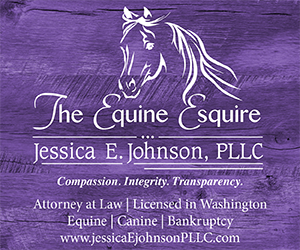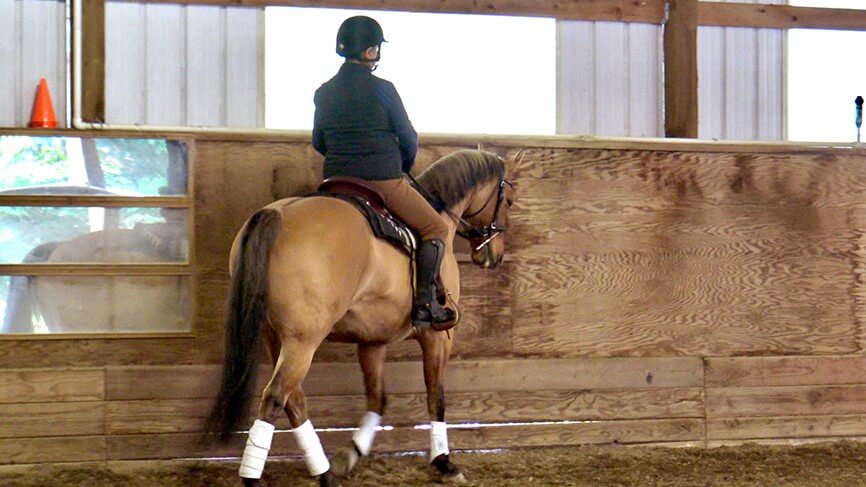Horse training is mostly about these three basics: balance, timing, and rhythm. Horses trained and ridden with these priorities as the foundation of their training will be soft, relaxed, and maneuverable—a joy for both horse and human.
Horses’ fear of falling is one of their greatest. Not only can a fall injure a horse but once on the ground a horse is more likely to be attacked by a predator. Our position on their back is very predatorial, so riding your horse out of balance leads to tension, sometimes extreme tension. Tension causes many problems such as braced necks, tight backs, choppy strides, spooking, refusing to go forward, or bolting.
There are two forms of balance in the horse—lateral and longitudinal. Lateral is side to side (a motorcycle leaning into a turn) and longitudinal is front to back (think teeter-totter). A horse that leans into or swings wide in his turns or on circles is not laterally balanced. The quality that gives horses lateral balance on a circle or turn is bend.
As a trainer, coach, and judge one of my most-visited subjects is bend. When I judge, the comments are often along these lines: “horse needs more bend” or “haunches fall out on circles and turns” or “neck bends more than body”. These comments address the size, shape, or uniformity of circles and turns, and these problems result in lower scores. All these issues come down to one subject: the horse needs to be more correct and consistent when bending on curved lines and circles.
Bending Facts
- A horse on a curved line must bend in order to be balanced.
- Lack of balance causes horses to brace in their body and/or neck in an attempt to keep themselves upright. This brace/stiffness will result in poor movement, crookedness, tension, connection (acceptance of the bit) issues, and incorrect geometry. The tendency for riders to pull or force the neck down creates even more tension, as the horse’s natural balance method (his raised neck) has been taken away from him.
- Horses’ necks should not bend more than their bodies. They should bend equally from poll to tail. An overbent neck will cause lateral imbalance in a horse.
- In order to stay correctly on a bending line (and bend in their bodies) a horse’s inside hind leg must step more under his center of gravity.
- A horse must stretch the outside of his body, reaching through his outside shoulder and hip, in order to be correctly bent.
It’s Not Just the Horse’s Problem
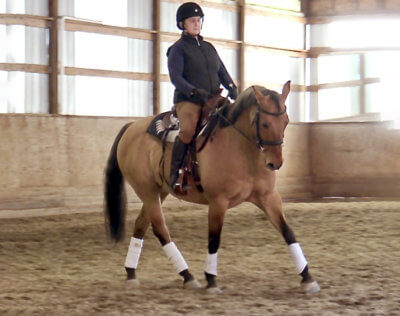
Riders need to be aware of their own “bend” and straightness. More often than not, riders cause the bending problems in their horses by:
- Pulling on the inside rein. Bend is maintained with the inside leg, not the inside rein.
- Pulling on the outside rein.
- Sitting on the wrong side of their horse. A rider’s weight needs to go in the direction of the turn and bend. Horses naturally bend around their rider’s weight, so if the rider’s weight falls to the outside the horse won’t be able to bend correctly.
- Not using their inside leg to ask their horse to step under on the inside hind or keeping their outside leg back to control the outside of their horse. If you don’t ask, you probably won’t get bending.
A rider’s shoulders must be parallel to the figure they are riding. The horse’s shoulders and hips should be in alignment with the rider’s shoulders and hips. This can be difficult to do when a horse is stiff and not bending.
How Do We Improve Our Horse’s Bend?
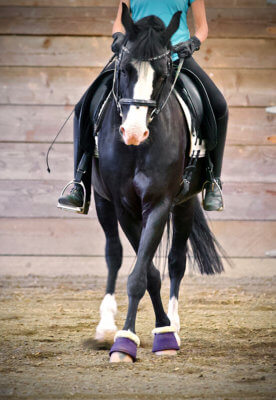
First the horse must learn to yield (move away from) the pressure of the inside leg. Leg yields and turn-on-the-forehands begin this work. Leg yield is a prerequisite to bending.
Second, we train the lateral work. Lateral work was invented as a tool to straighten and supple horses and to help them figure out how to bend their bodies. There are four lateral movements: shoulder-in, counter shoulder-in, travers (haunches-in), and renvers (haunches out). Counter shoulder-in and renvers are just mirror images of shoulder-in and travers. Half-pass is travers on a diagonal line, and pirouette is travers on a circle.
For example, if you struggle with your horse’s circles bulging out, your horse is leaning on his outside shoulder, so shoulder-in is the solution. Shoulder-in, quite literally, brings the shoulders in, preventing the aforementioned problem. Shoulder-in also asks the horse to step under his body more with his inside hind leg. Once you can control your horse’s shoulders you are well on your way to controlling your horse’s bend.
If your horse’s haunches swing out on bending lines and he leans on his inside shoulder, training haunches in (travers) will help this problem. Important: always train lateral movements in the walk before attempting them in trot or canter.
Lateral work can be performed on straight lines and circles. I do it every day around obstacles to relax and supple my horses. Think of it as horse yoga—done slowly and methodically in walk before moving on to trot and canter exercises. Training lateral work must be done progressively and thoughtfully. Like weightlifting and stretching, it can’t be forced. Consider enlisting the help of a qualified trainer as it takes a lot of time and practice to learn how to ride these movements and to understand lateral balance in your horse.
Once you and your horse have mastered lateral work you will have control of your horse’s body, and maintaining lateral balance/bend will be easier. This takes years of training, so don’t wait. Lateral work begins from the ground before the horse is ridden and continues until the horse is trained to the highest level.
See this article in the 2021 April online edition:
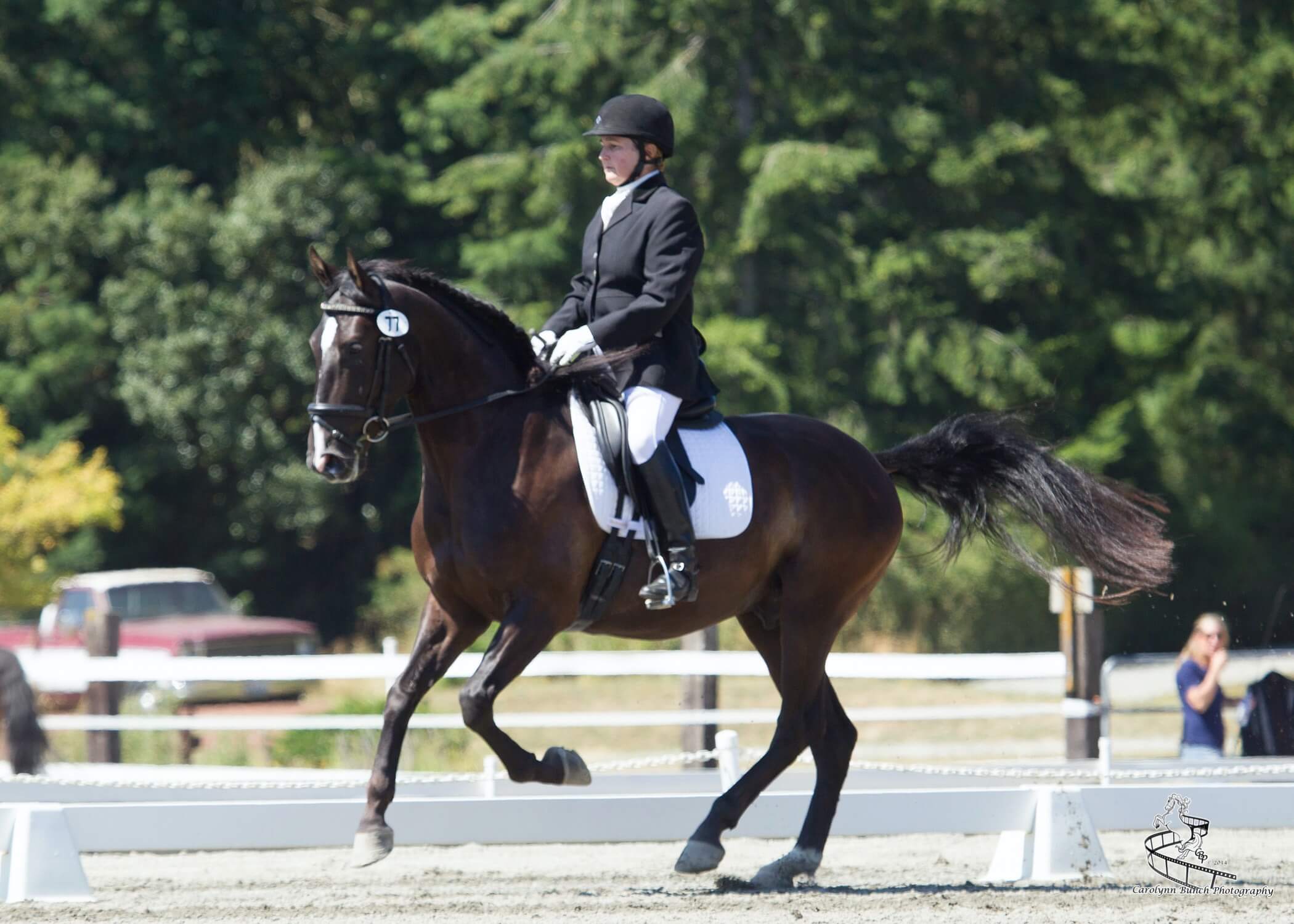
Kim Roe grew up riding on the family ranch and competed in Western rail classes, trail horse, reining, working cow, and hunter/jumper. She trained her first horse for money at 12 years old, starting a pony for a neighbor.
Kim has been a professional dressage instructor in Washington state for over 30 years, training hundreds of horses and students through the levels. In recent years Kim has become involved in Working Equitation and is a small ‘r’ Working Equitation judge with WE United.
Kim is the editor of the Northwest Horse Source Magazine, and also a writer, photographer, and poet. She owns and manages Blue Gate Farm in Deming, Washington where she continues to be passionate about helping horses and riders in many disciplines.


